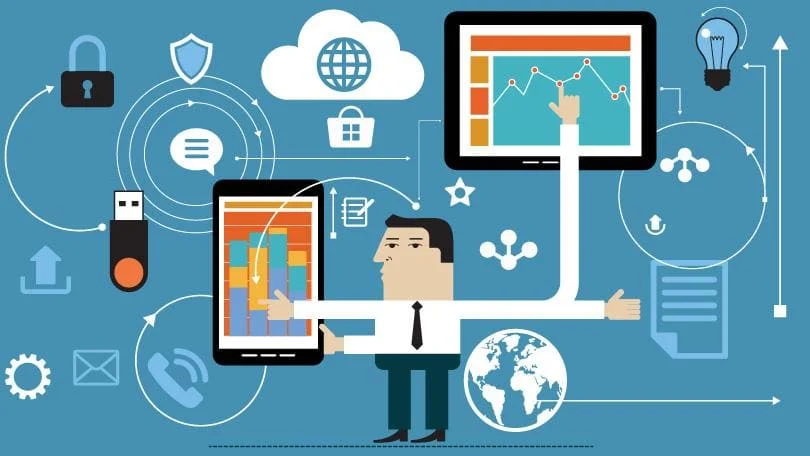Software as a Service (SaaS) has revolutionized the software industry by offering scalable, cost-effective, and user-friendly solutions. The SaaS Development Lifecycle is a structured approach to building robust, scalable SaaS applications. Understanding the stages and steps involved ensures a streamlined development process and a successful product launch. This article delves into the SaaS development lifecycle, incorporating critical elements of SaaS application development and the SaaS software development life cycle.
What Is the SaaS Development Lifecycle?
The SaaS Development Lifecycle (SDLC) refers to the series of stages involved in designing, developing, deploying, and maintaining SaaS products. This lifecycle is tailored to the unique requirements of SaaS applications, focusing on scalability, performance, and user satisfaction. It integrates Agile and DevOps practices to ensure rapid delivery and continuous improvement.
Key Stages of the SaaS Development Lifecycle
1. Ideation and Requirement Analysis
This stage is the foundation of SaaS application development. It involves brainstorming ideas, market research, and understanding user needs.
- Steps Involved:
- Identify market gaps and pain points.
- Define the target audience and their requirements.
- Create a detailed feature list based on user expectations.
- Conduct feasibility studies for technical and financial aspects.
- Tools Used:
- Market analysis tools, such as surveys and competitor analysis.
- Requirement-gathering tools like JIRA or Trello.
Read More: Case Study On HR Management
2. Planning and Design
Once the idea is validated, the next step is to plan and design the SaaS application. This includes defining architecture, workflows, and UI/UX design.
- Steps Involved:
- Outline the project roadmap and milestones.
- Design the architecture for scalability and multi-tenancy.
- Create wireframes and prototypes for the user interface.
- Select the technology stack (e.g., React, Angular, Node.js, Python, AWS).
- Key Considerations:
- Prioritize user-friendly designs.
- Optimize the application for mobile and web platforms.
3. Development
The development phase is where the actual coding and software building occur. Agile methodologies are often employed to break development into sprints, enabling iterative progress.
- Steps Involved:
- Backend Development: Build APIs and databases for functionality.
- Frontend Development: Develop the user interface.
- Integration: Connect third-party services, such as payment gateways and analytics tools.
- Version Control: Use tools like Git to track and manage code changes.
- Best Practices:
- Implement continuous integration (CI) for smoother collaboration.
- Follow coding standards and document the code thoroughly.
Read More: Case Study On Chatbot Integration for CRM
4. Testing
Testing is a critical phase of the SaaS software development life cycle. It ensures the application is reliable, secure, and user-friendly.
- Types of Testing:
- Unit Testing: Tests individual components for correctness.
- Integration Testing: Ensures seamless interaction between modules.
- Performance Testing: Evaluates scalability under load.
- Security Testing: Protects against vulnerabilities.
- User Acceptance Testing (UAT): Ensures the product meets end-user requirements.
- Tools:
- Selenium, JMeter, and OWASP ZAP for automated and manual testing.
5. Deployment
Once testing is completed, the SaaS application is ready for deployment. This stage focuses on making the product accessible to users through a cloud-based platform.
- Steps Involved:
- Set up a production environment (e.g., AWS, Azure, or Google Cloud).
- Implement containerization tools like Docker for easy scalability.
- Use a Continuous Delivery (CD) pipeline to automate deployment.
- Key Considerations:
- Ensure high availability and uptime.
- Implement monitoring tools to track performance post-deployment.
6. Maintenance and Updates
The SaaS development lifecycle doesn’t end at deployment. Continuous monitoring, updates, and customer support are essential for long-term success.
- Steps Involved:
- Monitor application performance using tools like New Relic or Dynatrace.
- Regularly update features to improve user experience.
- Provide technical support to address user issues.
- Conduct periodic security audits.
- Key Practices:
- Adopt a feedback-driven approach to refine the product.
- Use predictive analytics for proactive issue resolution.
Core Elements of SaaS Application Development
Scalability
SaaS applications are designed to serve multiple users simultaneously. A robust architecture ensures seamless scalability to handle increasing loads.
Multi-Tenancy
Multi-tenancy allows multiple users (tenants) to share the same application while maintaining data isolation and security.
Security
Data security is a top priority in SaaS. Encryption, secure APIs, and compliance with regulations like GDPR or HIPAA are crucial.
Automation
Automation streamlines development, testing, and deployment, reducing time-to-market.
User-Centric Design
SaaS applications prioritize ease of use, ensuring intuitive navigation and responsiveness across devices.
Best Practices for SaaS Software Development Lifecycle
- Adopt Agile Development: Agile methodologies enable iterative development, allowing for rapid adjustments based on feedback.
- Leverage DevOps: Integrate development and operations for faster, more reliable releases.
- Focus on MVP Development: Start with a Minimum Viable Product (MVP) to validate the concept and gather user feedback.
- Invest in Analytics: Use analytics tools to track user behavior and identify areas for improvement.
- Ensure Compliance: Adhere to industry standards and regulations to build user trust.
Conclusion
The SaaS development lifecycle is a dynamic and iterative process that encompasses ideation, design, development, testing, deployment, and maintenance. By focusing on scalability, user experience, and security, businesses can create successful SaaS applications that meet market demands. Embracing best practices, leveraging modern tools, and adopting an Agile approach further streamline the journey from concept to product. Whether you are building a new SaaS solution or enhancing an existing one, understanding these stages and steps is pivotal to achieving your goals in the competitive SaaS landscape.
